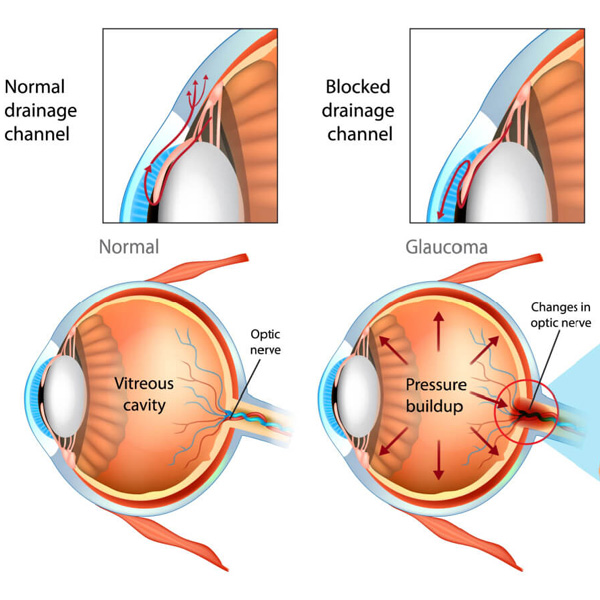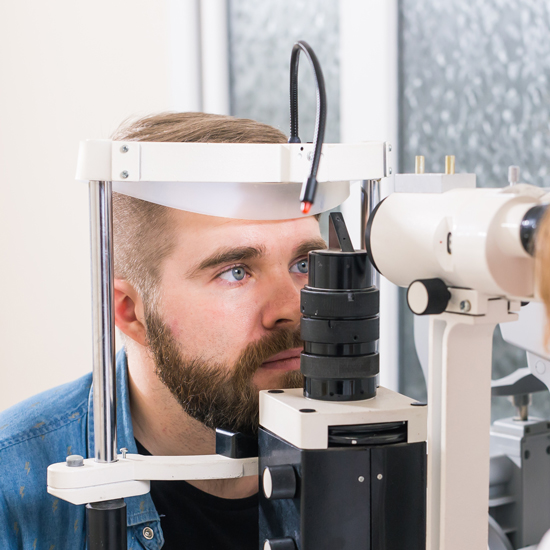Glaucoma
Home > patient Education>Glaucoma
Glaucoma
Introduction
Glaucoma is a leading cause of permanent total blindness in the elderly beyond the age of 60 years. However, it can occur at any age. Although there is no cure for glaucoma, early diagnosis and its treatment can prevent damage and protect the optic nerve.
Certain individuals are at higher risk of developing glaucoma than others. These include
- Are of Asian heritage
- Are over 40 yrs
- Have family members with glaucoma
- Have high eye pressure
- Have diabetes, high blood pressure, poor blood circulation,
- Are near-sighted/far-sighted
- Have thinner cornea at the centre
- Have had an eye injury
- Have been on steroids for a long duration


Glaucoma
Symptoms of Glaucoma
Initially, there are no symptoms of glaucoma in almost all types of glaucoma. Only in the angle-closure type of glaucoma, the patient might experience sudden onset redness, blurring of vision, severe headache, watering and light sensitivity.
At later stages, the patient might experience blind spots and loss of side (peripheral) vision. For this reason, glaucoma is also known as “sneak vision thief”.
In the early stages, most types of glaucoma show no symptoms. However, in angle-closure glaucoma, patients may encounter sudden redness, blurred vision, severe headaches, watering of the eyes, and light sensitivity.
As the condition progresses, individuals might notice blind spots and the gradual loss of peripheral vision.
Due to its often asymptomatic nature, glaucoma is aptly referred to as the “sneak vision thief.” Early detection through regular eye exams is crucial for effective management and prevention of vision loss.
Glaucoma
Treatment
Upon a glaucoma diagnosis, your doctor will recommend one of the following measures.
Medicines
This is the first line of treatment your ophthalmologist will start. All the classes of medicines help in lowering your eye pressure and preventing further damage to your optic nerve.
Laser therapy
These procedures usually help in increasing the outflow of fluid from the eye. They are simple procedures performed in the ophthalmologist’s office.
Trabeculoplasty
In persons with open-angle glaucoma, the laser is used to further open up the drainage angle so that the fluid flows out more properly, thus lowering the eye pressure.
Iridotomy
In persons with angle closure glaucoma, the laser is used to create an alternative passage in the peripheral iris for the fluid to drain out properly into the drainage angle.
Laser photocoagulation
This procedure is done in the middle area of the eye to lower the formation of fluid inside the eye.


Glaucoma
Treatment
Surgery
It is advised by the ophthalmologist if the desired eye pressure is not achieved by medicines or laser procedures. Sometimes, it may be advised as the first procedure.
Trabeculectomy
In this procedure, a bypass is created so that fluid is diverted directly into a reservoir outside the eye, thus bypassing the drainage.
Glaucoma drainage devices
Various microscopic drainage devices have been developed which are placed in the drainage angle to facilitate the egress.
Cataract surgery
In some cases, cataract removal/ clear lens extraction with the placement of IOC can lower eye pressure by creating.
